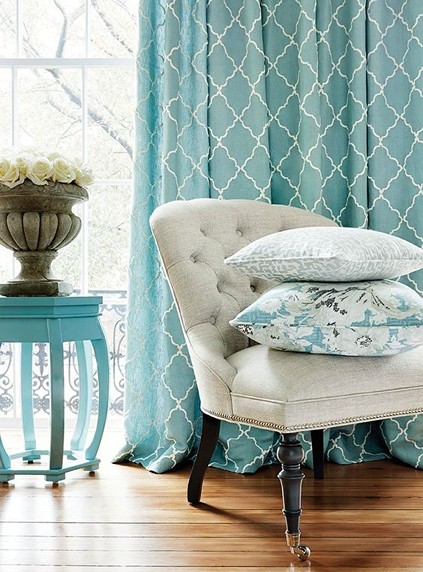Drapes vs. Curtains: Choose the Right One
Drapes vs. Curtains are a common debate when it comes to selecting the perfect window treatment. Drapes and curtains are two prevalent categories of window treatments that not only impart an element of style but also contribute significantly to privacy enhancement in any room. Moreover, these treatments prove indispensable when it comes to managing the amount of light entering the space and regulating temperature effectively. Despite sharing the common purpose of serving as window coverings, drapes and curtains exhibit individual characteristics that render them distinctive and unsuitable for interchangeability.
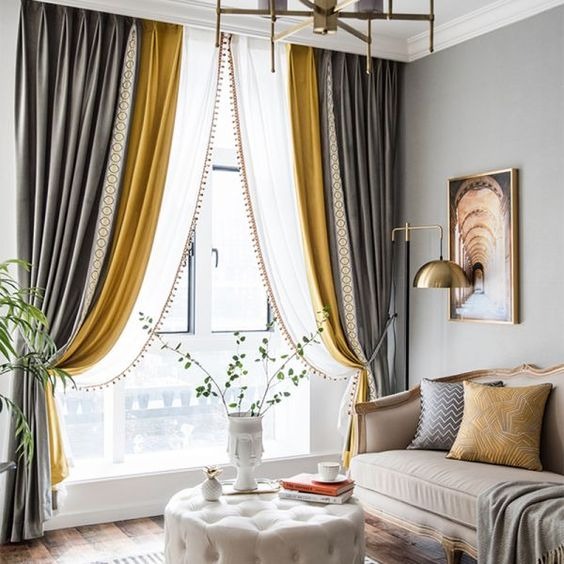
With an extensive array of sizes, styles, patterns, colors, and materials available for options, drapes and curtains offer remarkable versatility to accommodate varying preferences, personal styles, and budgetary constraints. The selection process hinges upon several crucial factors, such as determining the desired degree of light filtration, privacy levels, and insulation requirements, enabling you to make an informed decision that aligns precisely with your unique needs and preferences. Consider these six factors when choosing between curtains and drapes.
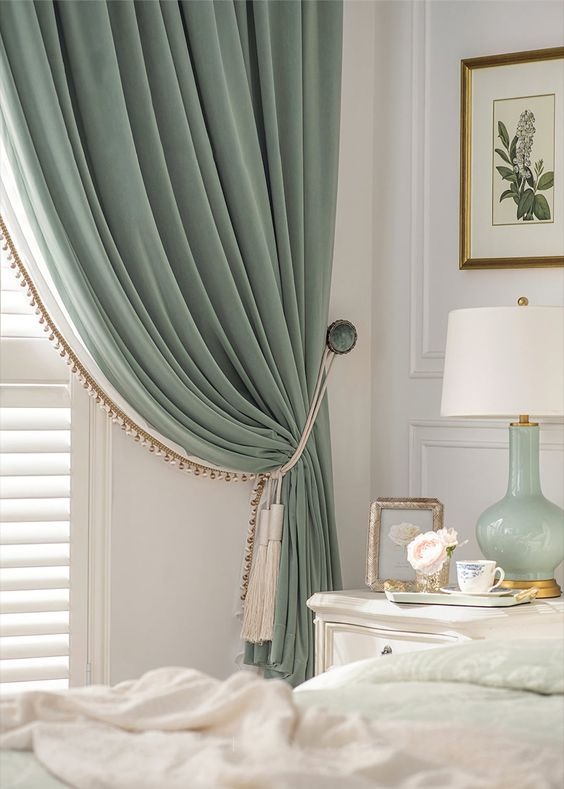
1. Fabric
When comparing drapes and curtains, one of the key distinguishing factors lies in the type of fabric used. Drapes typically employ thicker materials, such as velvet, silk, or damask, and they are commonly lined. These opulent fabrics imbue a room with a formal and luxurious ambiance, while the lining serves to provide an additional layer of insulation and light-blocking. Drapes effortlessly exude an air of refined elegance, making them well-suited for formal dining areas, living rooms, or bedrooms. The fabric choices available for drapes are virtually boundless, ranging from pleated and solid to textured and patterned, offering endless possibilities to match the desired aesthetic.
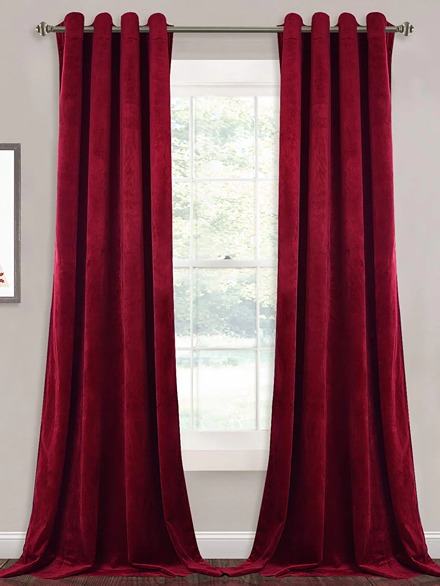
On the other hand, curtains are predominantly crafted from sheer fabrics like cotton, linen, gauze, or polyester. These materials contribute to a more relaxed and casual appearance within a space. Curtains are particularly well-suited for areas such as kitchens, bathrooms, or family rooms, where an increased flow of air and natural light is desirable. Their light and translucent nature enables a softer diffusion of sunlight, creating a gentle and breezy atmosphere.
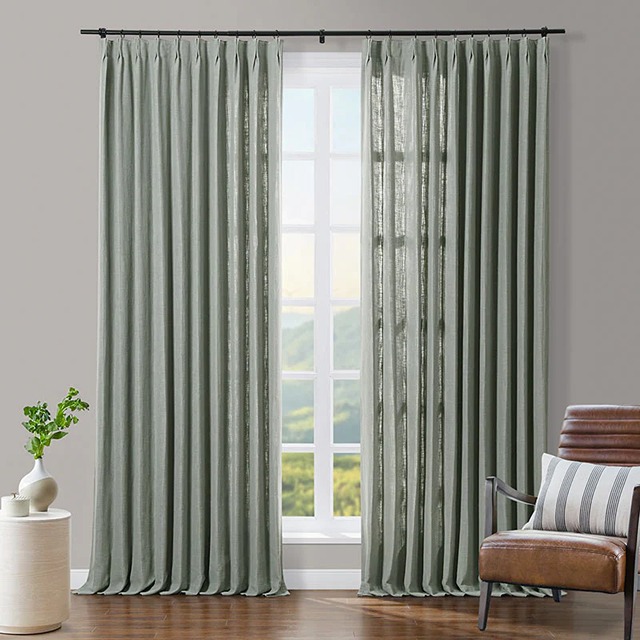
2. Length and Fullness
Drapes and curtains also diverge in terms of their length and fullness, further setting them apart. Drapes are typically designed to be floor-length or even longer. The deliberate extension of fabric creates a graceful and flowing appearance, allowing the drapes to puddle gently on the floor. This floor-length feature not only adds an element of elegance but also contributes to effective light-blocking and enhanced insulation. The opulent drape of the fabric creates a sense of grandeur and sophistication in the room, making it an ideal choice for those seeking a luxurious aesthetic.

In contrast, curtains are typically tailored to cover windows up to the level of the sill or extend a few inches below it. This shorter length and less voluminous design bestow a casual and breezy charm upon the room. The curtains’ ability to let in more natural light and airflow adds to the relaxed atmosphere they create. It is worth noting, however, that there is no fixed standard for curtain length, and they can also be crafted to be floor-length if desired. This flexibility allows for customization to suit personal preferences and specific design goals.

3. Functionality
The functionality of drapes and curtains showcases notable distinctions between the two. Drapes excel in providing enhanced privacy, light control, noise reduction, and insulation. The substantial weight and extended length of drapes, combined with their lining, enable them to hang closer to the window, effectively minimizing gaps that would otherwise allow light and air to penetrate. This makes drapes an excellent choice for spaces such as bedrooms or meeting rooms, where maintaining privacy, blocking out external disturbances, and creating a serene atmosphere are essential considerations.
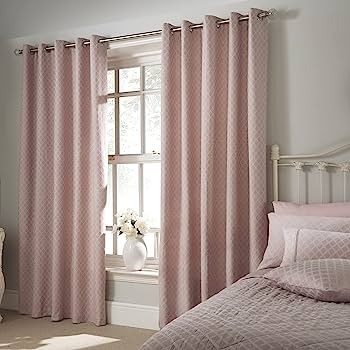
On the other hand, curtains are particularly well-suited for environments prioritizing an abundance of natural light and a gentle airflow. Their lighter fabric allows for a softer diffusion of sunlight, creating a warm and inviting ambiance. Curtains cater to spaces where an open and airy atmosphere is desired, such as living rooms, kitchens, or sunrooms. The breezy nature of curtains enables a seamless integration of the indoors and outdoors, fostering a connection with the surrounding environment and inviting a refreshing and uplifting energy into the room.

4. Hanging and Supports
The hanging and support methods for drapes and curtains share similarities, yet also showcase distinct requirements. Both window treatments consist of fabric panels that can be affixed using various installation options, including rods and rings, grommets, valances, or fabric sleeves. However, drapes typically demand sturdier and more robust rods and brackets to support their length, weight, and voluminous appearance. When aiming for a formal and sophisticated aesthetic, ornate and decorative designs may be selected for the rods and hardware, elevating the overall elegance of the space. In contrast, curtains necessitate less elaborate hardware and can often be hung using lightweight cords or tension rods. The designs for curtain rods tend to embrace simplicity and informality, aligning with the relaxed and casual charm that curtains bring to a room.
While both drapes and curtains share the need for appropriate hanging mechanisms, their differing characteristics influence the choice of hardware. Drapes, with their weight and floor-length nature, require sturdy supports to ensure a secure and visually pleasing installation. On the other hand, the lighter weight and shorter length of curtains afford greater flexibility, allowing for simpler and more lightweight hanging solutions. The selection of rods, rings, grommets, or other hardware components for drapes and curtains is a critical consideration that can enhance the overall appearance and functionality of the chosen window treatment, reflecting the desired ambiance and style of the space.

5. Cleaning and Maintenance
The cleaning and maintenance requirements for drapes and curtains can vary considerably. Owing to their heavier fabric and often lined construction, drapes typically necessitate professional cleaning or dry cleaning methods. This higher level of maintenance contributes to drapes being the more costly option in terms of cleaning. Even when attempting to clean drapes at home, the process can prove more challenging due to their bulk and the difficulty of removing them from the rod. Additionally, drapes occupy a substantial amount of space in a washer and dryer, resulting in increased usage of soap, water, and energy.
In contrast, curtains offer a more convenient cleaning experience. Their lighter weight and ease of removal make them a more manageable load for laundry purposes. When it comes to maintenance, curtains present a more eco-friendly and utility-saving alternative. The simplicity of cleaning curtains allows for reduced water and energy consumption, aligning with environmentally conscious practices and offering potential cost savings. With curtains, the cleaning process becomes more accessible, making it easier to maintain a fresh and pristine appearance in your space without incurring significant expenses or resource usage.
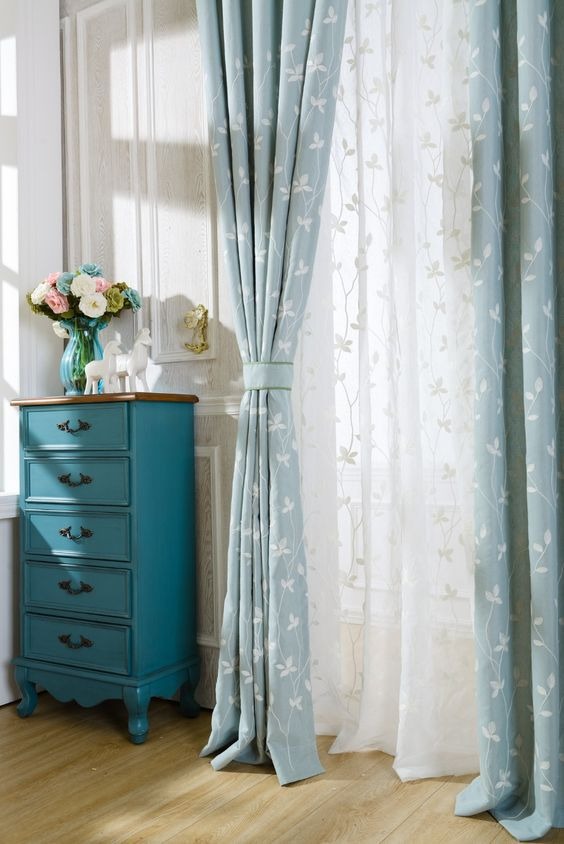
6. Cost
The cost aspect is a significant consideration when comparing curtains and drapes. Generally, drapes are associated with higher price points compared to curtains. This disparity in cost can be attributed to the utilization of premium and high-quality fabrics and linings in drapery production. Achieving the fuller and longer appearance characteristic of drapes requires purchasing larger quantities of fabric, further contributing to the overall cost.
In contrast, curtains are generally more budget-friendly. They require less elaborate and expensive materials, both in terms of fabric selection and quantity. The simplified design and lighter weight of curtains contribute to their affordability. It is worth noting, however, that the cost of both curtains and drapes can vary significantly depending on the specific fabrics chosen. Opting for more luxurious or rare materials can drive up the overall cost of curtains, while choosing more affordable fabrics for drapes can help mitigate expenses. Additionally, timing your purchase to coincide with sales or discounts may provide an opportunity to strike a balance between your preferred aesthetic and budgetary considerations.
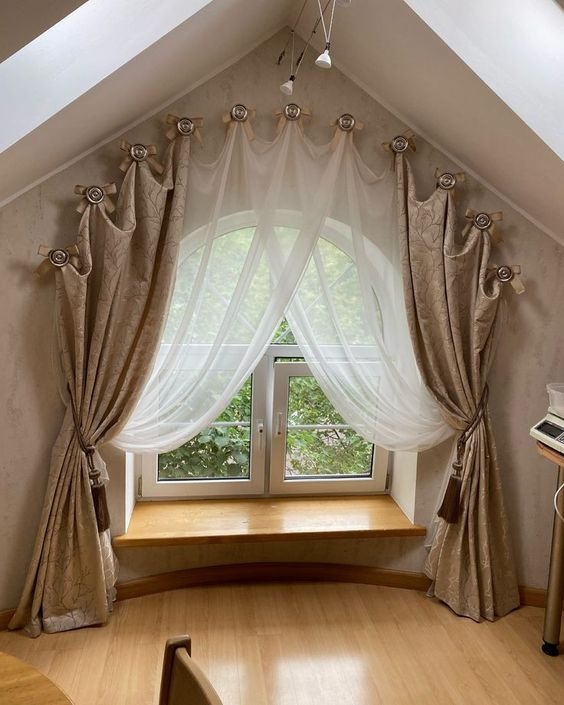
Blackout Curtains vs. Drapes
When considering the distinctions between blackout curtains and drapes, it becomes evident that blackout curtains cannot be classified as conventional curtains due to their specific purpose of blocking out light and sound. At first glance, they may resemble drapes, but there are discernible differences to consider.
Blackout curtains are crafted from thicker and heavier materials, featuring a simple and smooth surface design that is explicitly tailored to effectively block out light and minimize noise infiltration. In contrast, drapes offer a broader range of options, as they can be created using various fabrics and designs, often showcasing a more elaborate and ornate appearance. Additionally, blackout curtains generally come with a higher price tag compared to regular curtains or drapes, primarily due to their specialized materials and functionality. On the other hand, the cost of drapes can vary depending on the chosen fabrics and design elements, allowing for a more flexible range of price options.
For those seeking to maximize both style and coverage, a combination of drapes and curtains can provide an ideal solution, adding texture and depth to any room. By incorporating sheer curtains alongside drapes, it becomes possible to achieve a versatile setup that accommodates different lighting preferences. With the drapes open, sheer curtains allow natural light to filter through, creating a gentle and airy ambiance. Conversely, when the drapes are closed, the room can be darkened, offering increased privacy, noise reduction, and enhanced temperature control. By employing a touch of creativity, it becomes possible to harness the benefits of both blackout curtains and drapes, tailoring the atmosphere to suit individual preferences and requirements.
